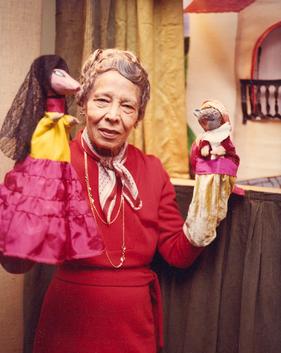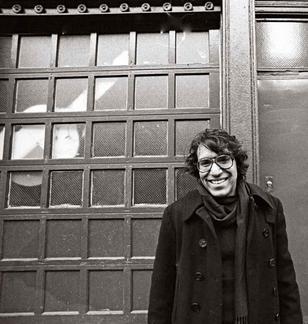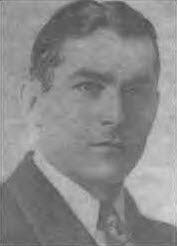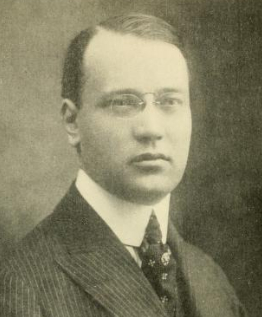Leonard Covello (November 26, 1887 - August 19, 1982) was an Italian-born American educator, most known as the founder and first principal of the Benjamin Franklin High School and for his work on behalf of the children of Italian and Puerto Rican immigrants.
Leonard Covello was born in 1887 at Avigliano, in the Basilicata region of southern Italy.
In 1890 his father, Pietro Covello, immigrated to the United States, leaving his wife and three children. Six years later, in 1896, the family was able to reunite in East Harlem, New York. Mary Elizabeth Brown, "Leonard Covello".
In school in America, he was called Leonard and won a Pulitzer scholarship in high school that enabled him to attend Columbia University from 1907 to 1911 and graduate.
In 1913 he was hired as a teacher of French and Spanish at DeWitt Clinton High School.
With the entrance of the United States into World War I in 1917, Covello went to France where, because of his knowledge of the French language, he was assigned to duties as an interpreter and became a member of the Corps of Intelligence Police, [1] conducting covert intelligence operations in Spain.
In 1920 Covello returned to his former position at DeWitt Clinton High School. Here he deepened his pedagogical ideas on the integration of young Italian-Americans. Covello challenged the practices that tended to separate the children from their culture and language, including their families and their communities of origin, as a prerequisite for their success in studies. As he recollected in his autobiography: "throughout my whole elementary school career, I do not recall one mention of Italy or the Italian language or what famous Italians there were in the world, with the possible exception of Columbus…. We soon got the idea that 'Italian' meant something inferior, and a barrier was erected between children of Italian origin and their parents…. We were becoming Americans by learning how to be ashamed of our parents." [2] In bilingualism and biculturalism Covello saw the means to facilitate the transition of children from immigrants to integrated citizens, without separating them from their communities or native culture, but on the contrary, instilling in them the pride of their roots. [3] For this purpose he founded "Il Circolo italiano" (The Italian Circle) at DeWitt Clinton in 1914.
In 1922, he created the Department of Italian at DeWitt Clinton, which he directed until 1926, when he was promoted to First Assistant in Modern Languages, a position he held until 1934. [4]
In 1934, the founding of Benjamin Franklin High School fulfilled his dream of creating in the East Harlem neighborhood a school organized around his educational theories. [5] Covello was not only the principal and leader of the school, but carried out intensive work as lecturer in order to disseminate his pedagogical theories. From 1929 to 1942 he was Adjunct Professor at New York University, from which he received his Ph.D. in Education in 1944.
When in the 1940s the neighborhood of East Harlem became increasingly Puerto Rican, Covello fought in favor of racial integration and applied to the Puerto Rican community the same principles he had tested in the 1920s and 1930s with the children of Italian immigrants. After a Sept 29, 1945, riot between black and white students, he successfully worked to calm tensions. [6] At the invitation of Covello , Frank Sinatra visited the school, spoke about ethnic tolerance and sang Aren't You Glad You're You? as a sign of reconciliation. [7]
In 1956 Covello retired from his role of principal of Franklin High School and accepted an appointment as an educational consultant of the Puerto Rican Migration Division.
In 1962 he worked for the YMCA and in 1964 became director of the East Harlem Youth Career Information Conference.
Covello was a founding member of the American Italian Historical Association (1966).
In 1972, Leonard Covello went to Sicily at the invitation of educator Danilo Dolci to apply his methods of education to disadvantaged children in Sicily.
Covello died August 19, 1982, in Messina, Italy.
The Heart is the Teacher is the 1958 autobiography of the Italian-American educator Leonard Covello, co-written with novelist Guido D'Agostino. The memoir details Covello's life as an Italian immigrant child and later teacher and principal in East Harlem, New York. It also offers Covello's reflections on the importance of schools and the community in the development of children in immigrant neighborhoods.
Covello wrote The Heart is the Teacher as a reflection on his life as an Italian immigrant growing up in America and his experiences over forty-five years as a teacher of immigrant children. In the opening paragraphs of his memoir, he comments on his career in education: "I have learned much about the ways of immigrant peoples and their American-born children. I was an immigrant boy myself. I know what the American school can do to maintain family unity. I also know how the school can function as the integrating force in our democracy and in the molding of young citizens." [8] As an educator and community leader, he was a firm believer in the power of the school in shaping neighborhoods and the lives of new immigrants to the United States.
In the first half of The Heart is the and the dason Teacher, Covello recounts his life as a young Italian immigrant. He comments on his life growing up in Italy, waiting with uncertainty for his father to raise the money to bring the family to America. Once in New York, he describes the poverty that was a constant burden to immigrant families as they struggled to survive in tenement apartments in East Harlem.
Covello's reflections on his teenage years draw attention to the challenges immigrant children faced embracing American culture in public while maintaining traditional Italian practices at home. He comments on his "fear of ridicule" in public over his foreign heritage and his efforts to maintain "separate watertight compartments" between his home and school lives. [9] These tensions were most apparent in Covello's tortured relationship with the school, as he frequently considered dropping out (which he did temporarily) to support his family. [10] But encouraged by teachers and friends, Covello applied for and won a Pulitzer scholarship to study at Columbia. Covello notes that it was in college that he began to embrace his Italian heritage. In addition, through teaching night classes in English, he began to develop his passion for teaching.
In the second half of his memoir, Covello reflects on his career as an educator and community leader in East Harlem. After graduating from Columbia, Covello started teaching languages at DeWitt Clinton High School. As a teacher, he sought to promote the passions of his Italian students by encouraging them to embrace their cultural heritage, forming an Italian Department and an Italian-American cultural club.
When World War I broke out, Covello's teaching career was interrupted by a tour of duty, followed by a stint as an advertising agent. But his love of teaching brought him back to DeWitt Clinton, where he sought to act as both a teacher and mentor to his Italian boys. This included efforts to act as an intermediary between the separate spheres he struggled with as a teenager. As an Italian immigrant himself, he connected with his students and even made home visits to encourage traditional parents to accept their sons' educational aspirations. Outside of the classroom, he helped organize numerous community programs, including night classes in English and American citizenship, as well as an Italian Parent-Teachers Association.
When New York City named Covello the first principal of the new Benjamin Franklin High School in 1934, a position he held for 22 years, he sought to turn the school into a community center for the neighborhood. While stressing the importance of academics, Covello considered neighborhood engagement equally important as a means of encouraging children to stay off the streets while bettering their community. His memoir recounts interactions with many of his students over the years, who affectionately called him "Pop," as well as the countless afterschool and evening programs he helped develop for the community.
In the final chapters of his memoir, Covello comments briefly on his work with Puerto Ricans as the new immigrant group of New York City. He also reflects on the lessons he learned after nearly half a century as an educator. He stresses the importance of teachers and schools as shapers of rising generations of citizens, and in the end, concludes that "the battle for a better world will be won or lost in our schools." [11]
Contemporary reviews of The Heart is the Teacher were positive. A reviewer for The New York Times questioned why a man of Covello's education and experience took on a co-author, but nevertheless called the book "well worth reading." [12] A reviewer for The Modern Language Journal was more praiseworthy, describing Covello as "an idealist with his feet firmly planted on the earth," and lauding the book as "readable, written in a candid, engaging, and moving style." [13]
In 1998, Harvard professor in the School of Education Vito Perrone wrote Teacher with a Heart: Reflections on Leonard Covello and Community as part of the Teachers College Press Series "Between Teacher and Text." In the book, Perrone comments on the legacy Covello left as an educator, and reflects on ways that current teachers can learn from Covello's experiences as a teacher in an immigrant community. The second half of the book offers select passages from The Heart is the Teacher. [14]
In 2013, the autobiography was reprinted in its entirety as part of the John D. Calandra Italian American Institute's "Studies in Italian Americana" series. But he died in 1982 at 98 years old
The Heart is the Teacher offers an insightful look into the experiences of Italian immigrants in the first half of the twentieth century. Covello describes in great detail the challenges Italian immigrant families faced. These challenges began in Italy, as wives and children struggled to survive while husbands and fathers traveled to America to earn money to support and transport their families; they continued in America for families who lived in cramped tenements and faced uncertainty in finding enough work to support themselves.
Covello's autobiography is especially valuable for its insights on children. He shares stories not only from his own childhood, but also from those of his students to demonstrate the challenges immigrant children or first generation Americans faced in balancing public and private lives. Like many of his students, Covello had to cope with feelings of being trapped by the views of his traditional Italian parents, whose culture centered on loyalty to the home and working to support the family. Covello's notions of separate spheres, evident not only in his experiences but those of his students, is an important concept for thinking about how immigrant and ethnic children coped with difficulties of embracing American culture without feeling that they were betraying their parents.
The book also reflects Covello's belief that a school should function as a center for community development. He comments in great detail on the centrality of ethnic culture to an immigrant's response to American life, which became the subject of his doctoral work. As an educator he embraced his ethnic heritage and became a firm believer that cultural and community pride could be used to tap into student potential, engaging them in educational and outreach programs to better their community. He also recognizes the importance of bridging the generational gap which he had struggled with as a child by bringing parents into the community and making them an integral part of their children's educations.
The Heart is the Teacher is a valuable resource for thinking about both immigration and education in the United States during the first half of the twentieth century. Covello offers detailed reflections and personal stories about the challenges new waves of immigrants faced coming to the United States in the twentieth century, including supporting families financially and balancing new American cultures with old world traditions. In addition, Covello's stories from his time as a student and teacher demonstrate that while school and community could increase tensions in immigrant families, they could also serve as centers of assimilation.

Down These Mean Streets is a memoir by Piri Thomas, a Latino of Puerto Rican and Cuban descent who grew up in Spanish Harlem, a section of Harlem with a large Puerto Rican population. The book follows Piri through the first few decades of his life, lives in poverty, joins and fights with street gangs, faces racism, travels, succumbs to heroin addiction, gets involved in crime, is imprisoned, and is finally released.

East Harlem, also known as Spanish Harlem or El Barrio, is a neighborhood of Upper Manhattan in New York City, north of the Upper East Side and bounded by 96th Street to the south, Fifth Avenue to the west, and the East and Harlem Rivers to the east and north. Despite its name, it is generally not considered to be a part of Harlem proper, but it is one of the neighborhoods included in Greater Harlem.

Arturo Alfonso Schomburg, was a historian, writer, collector, and activist. Schomburg was a Puerto Rican of African and German descent. He moved to the United States in 1891, where he researched and raised awareness of the contributions that Afro-Latin Americans and African Americans have made to society. He was an important intellectual figure in the Harlem Renaissance. Over the years, he collected literature, art, slave narratives, and other materials of African history, which were purchased to become the basis of the Schomburg Center for Research in Black Culture, named in his honor, at the New York Public Library (NYPL) branch in Harlem.

Vito Anthony Marcantonio was an American lawyer and politician who served East Harlem for seven terms in the United States House of Representatives.
DeWitt Clinton High School is a public high school located since 1929 in The Bronx, New York. Opened in 1897 in Lower Manhattan as an all-boys school, it maintained that status for 86 years. In 1983, it became co-ed. From its original building on West 13th Street in Manhattan, it moved in 1906 to its second home, located at 59th Street and Tenth Avenue. In 1929, the school moved to its present home on Mosholu Parkway in The Bronx, across from the renowned Bronx High School of Science.
Ronald Lyle Clark, Jr. is an American educator and reality television personality. He has taught in North Carolina and New York City; later in life, he founded the Ron Clark Academy in Atlanta, Georgia. Clark is a New York Times bestselling author and motivational speaker on the topic of inspiring educators.

Pura Teresa Belpré y Nogueras was an Afro-Puerto Rican educator who served as the first Puerto Rican librarian in New York City. She was also a writer, collector of folktales, and puppeteer.

Jack Agüeros was an American community activist, poet, writer, and translator, and the former director of El Museo del Barrio.

Since its founding in 1625 by Dutch traders as New Amsterdam, New York City has been a major destination for immigrants of many nationalities who have formed ethnic enclaves, neighborhoods dominated by one ethnicity. Freed African American slaves also moved to New York City in the Great Migration and the later Second Great Migration and formed ethnic enclaves. These neighborhoods are set apart from the main city by differences such as food, goods for sale, or even language. Ethnic enclaves provide inhabitants security in work and social opportunities, but limit economic opportunities, do not encourage the development of English speaking, and keep immigrants in their own culture.
Nicholasa Mohr is one of the best known Nuyorican writers, born in the United States to Puerto Rican parents. In 1973, she became the first Nuyorican woman in the 20th century to have her literary works published by the major commercial publishing houses, and has had the longest creative writing career of any Nuyorican female writer for these publishing houses. She centers her works on the female experience as a child and adult in Puerto Rican communities in New York City, with much of writing containing semi-autobiographical content. In addition to her prominent novels and short stories, she has written screenplays, plays, and television scripts.

Oscar Garcia Rivera Sr. was a politician, lawyer and activist. Garcia Rivera made history when in 1937 he became the first Puerto Rican to be elected to public office in the continental United States. In 1956, he also became the first Puerto Rican to be nominated as the Republican candidate for Justice of the City Court.

The Wadleigh High School for Girls, which was established by the NYC Board of Education in 1897 and moved into its new building in Harlem in September 1902 It was the first public high school for girls in New York City. At the time, public secondary education for girls was considered highly novel and perhaps a bit scandalous. Newspapers considered it newsworthy enough to devote many stories to describing classroom scenes of girls receiving “higher” education. The building is now shared among several schools including the Wadleigh Secondary School for the Performing and Visual Arts, the Frederick Douglass Academy II, and Success Academy Harlem West.

Shael Polakow-Suransky is the president of the Bank Street College of Education. Previously he was the New York City Department of Education Chief Academic Officer and Senior Deputy Chancellor.
Francesco M. Cordasco was an American sociologist and bibliographer who wrote and edited over 100 books. He specialized in immigration history and educational sociology.

Haaren High School was an American high school located in Midtown Manhattan, New York. The school was noted for its vocational program including classes focusing on internal combustion engines. The facility was constructed in 1903 to house DeWitt Clinton High School. When that school relocated in 1927, it became home to Haaren High School until that school closed in the late 1970s. After developers announced plans to renovate the building to house offices, production studios and retail, John Jay College purchased the structure in 1988 and remodeled it to house offices, a library, classrooms and other facilities.

Salvatore Albert Cotillo was an Italian-born New York lawyer, Democratic Party politician and judge. Elected in 1912, he was the first Italian-American to serve in both houses of the New York State Legislature and the first who served as Justice of the New York State Supreme Court. Nominated to the court in the First District, he sat on the bench from 1924 until his death in 1939.
New York City has the largest population of Italian Americans in the United States as well as North America, many of whom inhabit ethnic enclaves in Brooklyn, the Bronx, Manhattan, Queens, and Staten Island. New York is home to the third largest Italian population outside of Italy, behind Buenos Aires, Argentina (first) and São Paulo, Brazil (second). Over 2.6 million Italians and Italian-Americans live in the greater New York metro area, with about 800,000 living within one of the five New York City boroughs. This makes Italian Americans the largest ethnic group in the New York metro area.
The New York School for the Deaf is a private school for the deaf in Greenburgh, New York, in Westchester County just north of New York City, United States. It is private non-profit tax-exempt organization under article 501(c)(3) of U.S. law.
Muriel Petioni was a medical doctor and community activist in Harlem. She was known as the "matron of Harlem health" because she sought to fulfill the healthcare needs of the underprivileged people in Harlem.
José Angel Figueroa is a Puerto Rican poet, actor, author, editor, and a professor in the Humanities who has published poetry, fiction, and drama in the United States. He is best known for his poetry and is considered one of the first Neorican poets and contributed to the rise of the Nuyorican Literary movement. He was an early contributor to the Nuyorican Poets Café and has influenced the scene of Latino literature in New York through education, writing, and outreach.